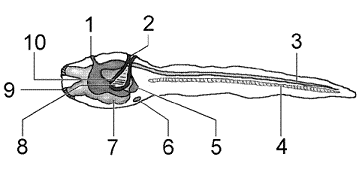A single seed lands on one of a group of isolated islands. Several million years later, its descendants have evolved into
a number of new species on the different islands, representing a variety of trees, shrubs, and vines. This is an example of
____.
a. adaptive radiation
b. punctuated equilibrium
c. genetic drift
d. microevolution
e. mutation
ANSWER: a
You might also like to view...
Plant viruses enter the host plant via
A. wound sites. B. specific receptors. C. nonspecific receptors. D. seeds.
If a mammal suffered damage to the temperature sensor in its brain, what would be the result?
A. The integrating center would not receive inputs to compare to the set point. Body temperature could rise or fall to dangerous levels. B. Only the integumentary system is required to sense temperature changes. Body temperature would remain stable. C. The animal would have to rely on shivering instead of vasoconstriction to maintain body heat. D. The animal would fall back onto a more primitive ectothermic mode of regulation. Clarify Question What is the key concept addressed by the question? What type of thinking is required? Gather Content What do you already know about temperature regulation? What other information is related to the question? Choose Answer Given what you now know, what information is most likely to produce the correct answer? Reflect on Process Did your problem-solving process lead you to the correct answer? If not, where did the process break down or lead you astray? How can you revise your approach to produce a more desirable result?
In which of the stages below does each
chromosome consist of two DNA molecules? I. metaphase II. telophase III. prophase IV. anaphase a. III and IV b. I, III, and IV c. I and III d. I, II, and III e. I, II, III, and IV
The organism in Figure 32-1 is a representative of:

a. the phylum Hemichordata.
b. the phylum Echinodermata.
c. the phylum Chordata.
d. the subphylum Urochordata.
e. the subphylum Cephalochordata